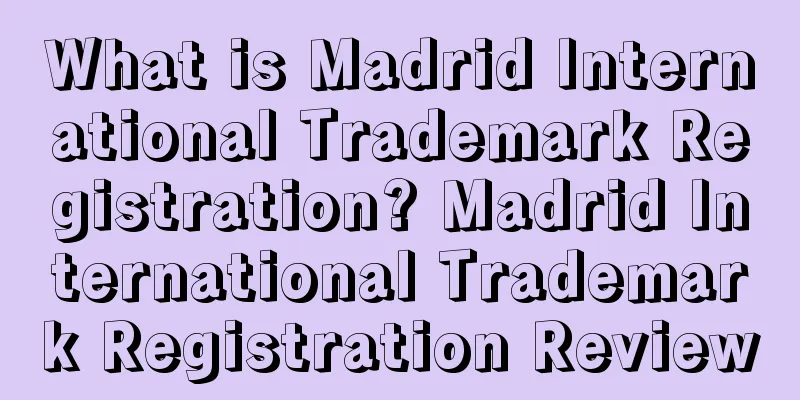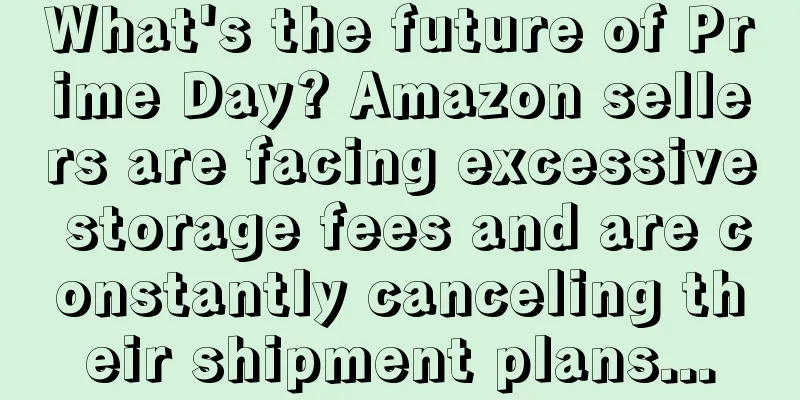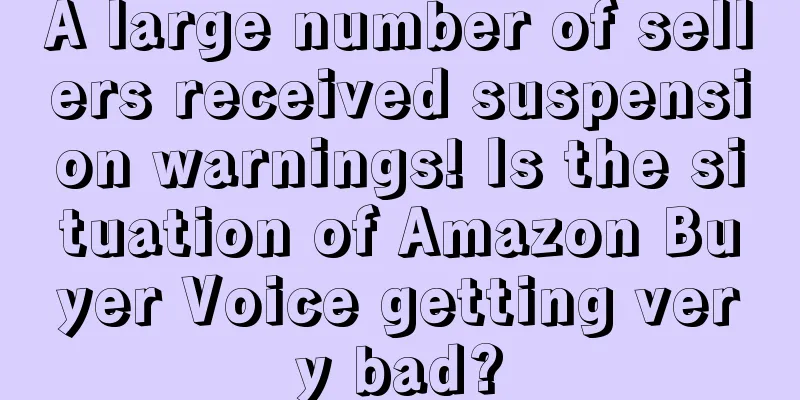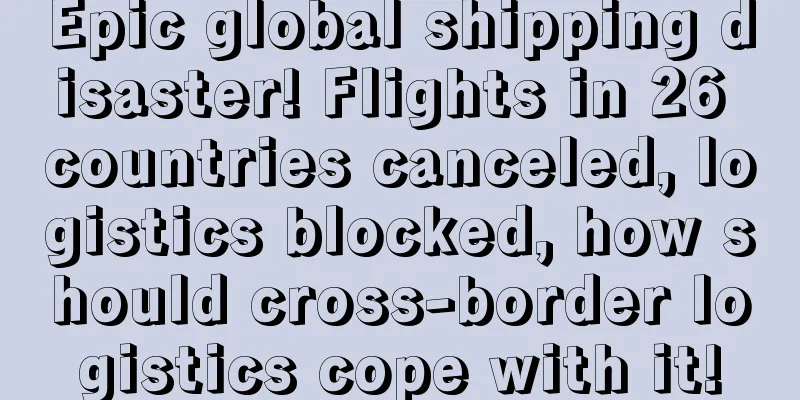What is Madrid International Trademark Registration? Madrid International Trademark Registration Review

|
Madrid international trademark registration refers to the registration of trademarks between member states of the Madrid Union in accordance with the provisions of the Madrid Agreement Concerning the International Registration of Marks (hereinafter referred to as the "Madrid Agreement") or the Protocol Relating to the Madrid Agreement Concerning the International Registration of Marks (hereinafter referred to as the "Madrid Protocol"). history The Madrid Agreement Concerning the International Registration of Marks was signed in Madrid, Spain, on April 14, 1891, requiring the use of French as the language, and came into force in July 1892. On June 27, 1989, the Protocol Relating to the Madrid Agreement Concerning the International Registration of Marks was signed in Madrid, Spain, stipulating that applicants can choose to use English or French. Madrid Union The "Madrid Union" refers to a special union for the international registration of trademarks composed of countries or intergovernmental organizations to which the "Madrid Agreement" and "Madrid Protocol" apply. As of August 2017, the Madrid Union has 99 contracting parties covering 115 countries. Major economies in the world, such as China, the United States, Germany, France, the United Kingdom, Italy, Japan, South Korea, Russia, Australia, and Switzerland, are all members of the Madrid Union. How to apply for Madrid trademark international registration 1. Applicant qualifications: Applicants must have certain subject qualifications. Applicants should have a real and effective industrial and commercial business location in my country; or have a residence in my country; or have Chinese nationality. In addition, legal persons or natural persons in Taiwan Province can apply for international registration through the Trademark Office. However, legal persons or natural persons in the Hong Kong and Macao Special Administrative Regions cannot currently apply for international registration through the Trademark Office. 2. Application conditions: The trademark applied for international registration can be a trademark that has been registered in my country, or a trademark that has been applied for registration and accepted in my country. 3. Processing methods: There are two ways to apply for Madrid trademark international registration through the Trademark Office: entrusting a nationally recognized trademark agency to handle it; the applicant submits the application to the Trademark Office on his/her own. 4. Processing steps: prepare application documents → submit application documents to the International Registration Office of the Trademark Office → pay registration fees according to the provisions of the "Fee Notice" → receive the International Registration Certificate. 5. Accepting agency: International Registration Office of the Trademark Office of the State Administration for Industry and Commerce. 6. Application materials: Madrid Trademark International Registration Application Form; Foreign language application form (MM2 Form); documents proving the applicant’s qualifications, such as a copy of the business license, a copy of the residence certificate, a copy of the identity document, etc.; if an agent is appointed, a power of attorney should be attached; if the United States is designated, MM18 Form should be submitted together. 7. Fill in the application form: Requirements for filling out the Chinese application form: (1) Applicant information: applicant's name; applicant's address; applicant's correspondence address; and language of choice for receiving correspondence. (2) Applicant qualifications: If the applicant designates a country for protection that is a member of the Madrid Protocol, the three options available to the applicant should be selected in order. That is, the applicant should first determine whether he or she meets the first option. If so, the first option should be selected first. If not, the second option should be selected. If the second option is not selected, the third option should be selected. If all three options are met or two options are met, the first option should be selected. If the applicant designates a country for protection that is a member of the Madrid Protocol, the applicant can select any one of the three options that meets the requirements. (3) Agent information: If the applicant handles the application directly, this column does not need to be filled in. (4) Basic application or basic registration: This refers to the trademark application and registration in my country, not the application and registration of internationally registered trademarks. If the applicant files international registration applications for multiple basic applications or basic registrations for the same trademark, the basic application number, application date and/or basic registration number and registration date should be filled in one by one. (5) Priority: If the applicant claims priority, the date and application number of the first application should be indicated. (6) Trademark: The applicant is required to paste the trademark image here. The size of the trademark should be in accordance with the requirements of the application form. (7) Other matters: Request for color protection: If the applicant requests color protection, a specific description may be given; Three-dimensional mark: If the basic mark is a three-dimensional mark, this item is required; Sound mark: If the basic mark is a sound mark, this item is required; Collective or certification mark: If the basic mark is a collective or certification mark, this item is required; Trademark transliteration: Just fill in the standard Chinese pinyin of the trademark here. (8) Goods and/or services and their categories: ① Goods and/or services and their categories: Here, the goods and services should be filled in according to the order of the goods and service categories listed in the International Classification of Goods and Services for Trademark Registration. ② If the goods/services and categories are limited to specific countries, please indicate the specific designated Contracting Party and all the categories and goods/services for which protection is sought in that designated Contracting Party. The limited goods/services shall not exceed the scope of the goods/services designated in item (1). (9) Designation of Contracting Parties for Protection: The applicant shall mark the box to the left of the Contracting Party for which protection is desired. For example, if the applicant designates Germany, France and Italy as the countries for protection, the applicant only needs to mark the boxes to the left of these three countries. If the applicant has obtained a domestic acceptance notice, the applicant may designate Contracting Parties to the Agreement or Protocol, as well as Contracting Parties to the Protocol alone; if the applicant has obtained a domestic registration certificate, the applicant may designate all Contracting Parties. (10) Payment method for this application: Put an “×” in the box to the left of the payment method you choose. 8. Paying fees: After receiving the application documents with complete formalities, the Trademark Office will record the date of receipt, assign the application number, calculate the fees that the applicant needs to pay, and issue a "Fee Notice" to the applicant or agent. The applicant or agent should pay the relevant fees to the Trademark Office within 15 days from the date of receipt of the "Fee Notice". The Trademark Office will submit the application to the International Bureau only after receiving the full amount. If the applicant or agent fails to pay the fees within the deadline, the Trademark Office will not accept their application and notify the applicant in writing. 9. Collection of the International Registration Certificate: After the International Bureau of the World Intellectual Property Organization (WIPO) receives an international registration application that complies with the Common Implementing Regulations of the Madrid Agreement Concerning the International Registration of Marks and its Protocol, it will register the application in the International Register, issue the International Registration Certificate to the trademark applicant, and notify the trademark authorities of each designated contracting party. The International Registration Certificate is sent directly by the International Bureau to the International Registration Office of the Trademark Office, which then forwards it to the applicant or trademark agency. It should be noted that the applicant must fill in the address clearly (a correspondence address can be added). If the applicant's address changes, the change should be handled in a timely manner. 10. Notes: (1) International registration applications designating the United States, Japan, South Korea, Singapore and other countries often receive examination opinions or provisional rejection notices from these countries, which causes certain losses in time and cost for international registrations of Chinese applicants. The reason for the above problems is that these countries made reservations or declarations on certain provisions of the Madrid Agreement or Protocol when joining the Madrid Union, and when reviewing certain elements of Madrid international registration applications, they mainly rely on their own laws and regulations. (2) The validity period of an international registration is ten years, calculated from the date of international registration. After the expiration of the validity period, if you wish to continue to use the trademark, you must renew the registration. advantage 1. Low cost: You only need to submit an application once and pay the fee once. You do not need to pay attention to the country where you submit the application, which reduces the cost of applying for registration. 2. Short time: When applying for a Madrid trademark, you do not need to go through various application verification procedures. During the trademark review and announcement period, the risk of trademark registration is the highest. If the trademark is rejected and the application is reviewed, the time fluctuation of trademark registration will increase. However, applicants for Madrid trademark registration will know in which countries their registered trademarks are protected within about 12-18 months, and they only need to submit an application once. 3. Simple procedures: Compared with submitting applications in each country one by one, not only do you need to prepare multiple trademark registration materials, but you also need to follow up on the progress of trademark registration. In the event that a trademark is rejected or there is an objection to a trademark, you must conduct a rejection review or objection reply procedure one by one, which increases the procedures for trademark registration. Through the Madrid trademark registration, unnecessary repeated applications for the same trademark are reduced. Applicants can use one application document for a registered trademark to specify one or more countries and apply for trademark registration in one or more categories of goods or services. 4. Extensive trademark rights: Trademarks are territorial, which limits the territoriality of trademark rights. A trademark can only enjoy local trademark protection after being registered locally. In other words, a trademark applied for in China is not protected by any law when used outside China. However, by applying for registration in Madrid and designating relevant countries for review and approval, it can be protected by law when used in the designated countries, which increases the scope of trademark rights. 5. Flexible use of trademarks: After a trademark is successfully registered, it will enjoy the protection of the designated country. The trademark only needs to be used in any country of the contracting parties to ensure that the trademark can be protected without any restrictions. The trademark can also be used flexibly to prevent malicious registration by others, or copycat sales, etc. insufficient 1. Limitations of the registered country: The Madrid Agreement was first proposed by countries that implement the principle of trademark registration. Therefore, domestic registration in the country of origin is a prerequisite for applying for international trademark registration. There are certain restrictions for those who do not meet the requirements. Most of the member states of the Madrid Union are EU countries, and the countries that currently have close trade relations with my country are mainly North American countries. 2. Application time limit: The prerequisite for Madrid trademark registration is to apply for domestic trademark registration or application as the basic application premise, that is, the submitted application must be based on the domestic registration or preliminary application announcement of the same trademark. When the applicant takes the domestic application as the premise, the application for international trademark registration will be delayed in time. 3. Unstable trademark rights: Since the Madrid trademark registration requires a domestic application or registration as the basis, it can only be decoupled from the registration in the country of origin after five years. If the registered trademark is revoked within five years, the Madrid trademark will also be revoked. This situation is usually called the "central strike principle." Cross-border related events In February 2017, sellers on Amazon Canada, the United States, Germany, the United Kingdom and other sites had their accounts frozen because the Scorpio brand name generic was judged to be infringing. The complainant used the Madrid trademark. Application for change in my country 1. According to the announcement in August 2017, when applying for a new application for Madrid international trademark registration, it is not necessary to submit a copy of the "Notice of Acceptance of Trademark Registration Application" or a copy of the "Trademark Registration Certificate". The acceptance or registration information of our trademark examination system shall prevail. 2. When handling the change of the name and/or address of the registrant, the approval of the change of the basic trademark is not a prerequisite. Development of the Contracting States -At the end of 1991, the Madrid Union had 29 member states. -On October 23, 2006, the Madrid Union had 78 member states (or contracting parties, which has now increased to 80). -As of December 2015, there are 97 Contracting States. -With the accession of Thailand in 2017, the number of Madrid Union member states (including regional organizations) increased to 99. -China joined the Madrid Agreement and the Madrid Protocol in 1989 and 1995 respectively. |
>>: What is Unicorn Smasher? Unicorn Smasher Review
Recommend
FTC issued a warning to more than 700 companies: Do not "hire water army", otherwise you will be fined!
It is learned that the FTC (Federal Trade Commissi...
Keyword search volume exceeds 10,000, these wedding products are the best-selling
For cross-border e-commerce sellers, the quality ...
Listing Optimization 12- A+ Page
<span data-shimo-docs="[[20,"一、什么是A+页面&quo...
How to write a high-response email for influencer collaboration
After you have identified the influencers you want...
What is Power Of Attorney? Power Of Attorney Review
Power Of Attorney (POA) is a letter of authorizati...
Starting from September, the commission will be halved! Amazon launches a new promotion
Not long ago, Amazon France notified sellers by e...
A small operation with half a year of experience, recording the process of working alone on Amazon from selecting items for 1688 in May to making a net profit of 60,000 yuan in November...
Preface I joined Amazon half a year ago, and I mad...
Crash! The goods were missing for 90 days! The "second-hand freight forwarder" refused to compensate, and finally...
Recently, a seller exposed a certain international...
What is Keyword Eye? Keyword Eye Review
Keyword Eye is a visual keyword and competitor res...
What are Dealabs? Dealabs Review
Dealabs is a French discount information website t...
What is Document 37 Registration? Document 37 Registration Review
Explanation of terms for the nature of overseas in...
Three promising e-commerce stocks in 2022! Amazon's Q4 performance is expected to reverse the downward trend
It is learned that recently, Faizan Farooque, a we...
How to file a complaint against Amazon for image infringement?
Amazon requires that product images must be clean,...
What is Yiwei? Yiwei Review
Shenzhen Yiwei Intellectual Property Co., Ltd. is ...
Urgent! If you don’t upload this type of file before November 9, your product will be removed from the shelves! A large number of sellers have been affected!
Yesterday, just as everyone was immersed in the jo...









